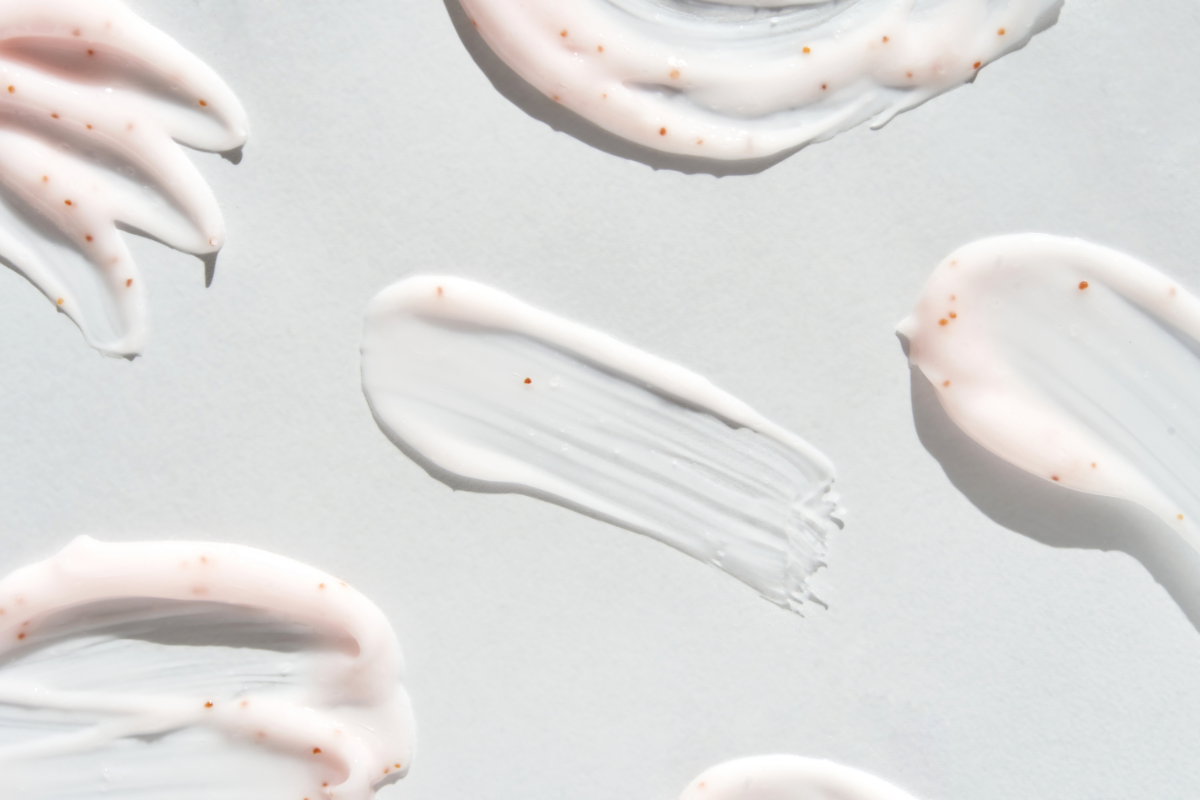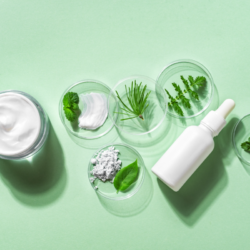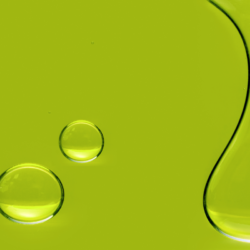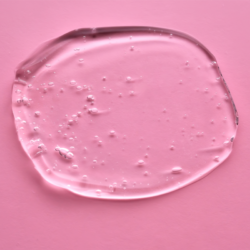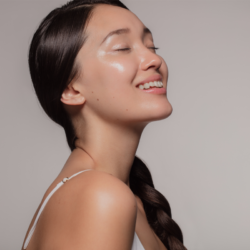Consumers do not want parabens in their cosmetics and food. As a result, many brands use the ‘paraben-free’ argument to sell more effectively. Others continue to use parabens because scientific studies do not clearly conclude that they are toxic. So, preservatives or no preservatives? In this article, we look at how to choose the right organic product by deciphering the INCI formulas of cosmetic products.
How to decipher the INCI list of products you buy in pharmacies
Since 1998 in Europe, the INCI list has had to appear on the cardboard outer packaging or on the product itself. INCI stands for “International Nomenclature of Cosmetic Ingredients”. The INCI list shows the ingredients in descending order of volume. Water very often appears at the top of the list. Water is the base of all emulsions, shower gels and shampoos… Manufacturers generally list molecules in English and mention plant extracts in Latin on cosmetic products. With a minimum of knowledge, or with the help of the Internet, this practice makes it possible to detect the different ingredients. In particular, it helps to identify those that are the subject of criticism or allergens, which must be indicated at the end of the list.
What is the INCI list?
The INCI list (International Nomenclature of Cosmetic Ingredients) has been a compulsory nomenclature for cosmetic products since 1999. In 1973, an American association drew up this list with the aim of standardising the ingredients present in cosmetic products. Nevertheless, manufacturers are not obliged to reveal the precise concentration of ingredients because of “manufacturing secrecy”. However, it has been established that ingredients must be listed in descending order of concentration. This order applies to ingredients present in excess of 1% in the product. Below 1%, the manufacturer is free to place them in any order he wishes on the packaging.
TheInternational Nomenclature of Cosmetic Ingredients (INCI) was created in 1973. It was instigated by the Cosmetic, Toiletry and Fragrance Association (CTFA), an American association. This association brings together cosmetics manufacturers. Since 1998, the use of the INCI has been mandatory for all cosmetic products in theEuropean Union. The nomenclature has also been adopted in Japan and China. In 2007, the CTFA became the Personal Care Products Council (PCPC). This council continues to oversee theINCI for cosmetic products.
The INCI uses two languages to define the ingredients of a cosmetic product. Plant extracts and natural products are referred to by their Latin names. Similarly, molecules, synthetic substances and common names are given in English. Colorants are identified by a 5-digit colour index.
Ingredients are always listed in descending order of quantity, with additives at the end of the list. Since 2013, the member countries of the European Union have also required nanoparticles to be listed in square brackets to inform consumers of their presence.
What are the issues involved?
The composition of cosmetic products is of major importance to the industry. Consumers are increasingly looking for transparency and want to know all the ingredients present in cosmetic products such as creams, serums, milks and beauty products. The International Nomenclature for Cosmetic Ingredients (INCI) promotes more transparent, objective and reassuring information on the cosmetics market.
Transparent communication about the composition of a cosmetic product is essential for establishing trust with customers. Consumers are looking for healthy, natural cosmetic products, and the INCI enables them to identify ingredients derived from the petrochemical industry or likely to raise questions about their safety. Certain ingredients can also be avoided for ethical or militant reasons.
The advantages of INCI include transparency for consumers and international harmonisation of ingredient names. However, the limitations lie in the absence of precise quantities, the origin of ingredients and the method of manufacture. The generic term ‘fragrance’ can also mask certain ingredients, potentially misleading consumers.
International nomenclature for cosmetic ingredients, such as INCI, plays an essential role in the transparency and safety of cosmetic products, while providing clear information to consumers.
The difference between organic and natural ingredients in an INCI list
In the world of beauty products, it is often difficult to distinguish between organic cosmetics from natural cosmeticsand to differentiate them from conventional cosmetics. We will explore the criteria that define a cosmetic as natural or organic.
Organic cosmetics
By organic cosmeticsorganic cosmetics are defined as “products made with ingredients from organic farming”. This means that the ingredients used have been produced in accordance with the regulations governing organic farming. Mainly without pesticides. Organic products are subject to a number of labels. Some labels are more demanding than others.
Organic cosmetics guarantee a high proportion of natural and organic substances, in compliance with the standards of eco-labels. These certification bodies encourage the use of natural and organic ingredients, focusing on those derived fromorganic farming. The aim is to ensure total transparency for consumers and to apply the precautionary principle to controversial ingredients, for the safety of users and the environment.
Examples of labels and their requirements are
- Ecocert: Requires at least 95% plant-based ingredients and 10% from organic farming.
- Cosmebio: Requires 95% ingredients of natural origin, with 95% organic ingredients among the plant ingredients and at least 10% organic ingredients in total.
- Nature et Progrès: Strict ban on GMOs, hydrogenation, ionisation, nanotechnologies, synthetic chemicals and petroleum derivatives. Preservatives must be natural and non-toxic. The use of palm oil and animal testing is prohibited. Vegetable ingredients must be organic, preferably under the Nature et Progrès label. Packaging must be environmentally friendly.
- BDIH (controlled natural cosmetics): Requires 95% natural ingredients, prohibits animal testing, and the use of products derived from dead animals. Mineral oils, silicones, synthetic dyes and fragrances are prohibited. The use of washing bases and emulsifiers is limited to gentle processes.
- Natrue: Defines strict criteria for minimum levels of natural substances and maximum levels of processed substances of natural origin. At least 70% of the ingredients must be organically produced.
These organic labels aim to guarantee the quality and safety of cosmetics, by imposing strict criteria and encouraging the use of natural and organic ingredients.
Natural cosmetics
A natural cosmetic is made up mainly ofnatural ingredients: plants, animals (terrestrial or marine) or minerals. Although there is no strict legal definition, a natural product is mainly derived from nature, with few or no chemical or synthetic elements.
Since 1 July 2019, advertising for cosmetics has had to comply with Regulation 655/2013 and the ARPP’s recommendations. A product can only be described as “natural” or “of natural origin” if more than 95% of its content is natural.
The difference between a natural ingredient and a ingredient of natural origin is significant. A natural ingredient is extracted physically without altering its chemical structure or active properties. An ingredient of natural origin, on the other hand, has undergone a chemical transformation that alters its properties.
A natural cosmetics generally contains 95% to 100% ingredients of natural origin.
“Natural” means unprocessed, except by traditional mechanical means. The standard NF ISO n° 16128 or a certification label may define this term. “Derived from natural” indicates a slightly processed natural raw material. “Of natural origin” encompasses both definitions and may be used if the level of naturalness is greater than 50%. Labels and standards define these terms and their criteria.
If a finished product contains more than 95% natural ingredients, it can be described as “natural”. If less, the percentage must be indicated.
Soaps, even artisanal ones, are not “natural” by definition, but may be made from natural ingredients, with the percentage indicated if it is less than 95% in the finished product.
Focus on cosmetic claims
Common criteria for cosmetic product claims play a crucial role in ensuring legal compliance and truthfulness. EU Regulation 655/2013 governs these claims and EC Regulation 1223/2009 specifies them. In France, the ARPP clearly defines these claims.
The fundamental principles of claims include:
- Compliance with legislation: Prohibition of claims indicating authorisation or approval by an EU authority, or suggesting particular benefits for products meeting only minimum legal standards.
- Truthfulness: Claims must not mention false ingredients or exaggerate the properties of an ingredient.
- Evidence: Claims must be supported by adequate and verifiable evidence, including expert assessments, and be based on current, valid, reliable and ethical methods.
- Sincerity: Claims must not promise more than the available evidence demonstrates.
- Fairness: Claims must remain objective and not denigrate the competition or legally used ingredients.
- Informedchoice: Claims must be clear and understandable to the average consumer.
Concerning specific claims:
- Without” claims: Authorised only if they are not the main argument but provide additional information. Free” claims for ingredients banned in cosmetics have been banned since July 2019.
- Environmental claims: Must avoid misleading consumers about the ecological benefits of products.
- Natural Cosmetic Products: A product is qualified as “natural” or “of natural origin” if its natural content is greater than or equal to 95%, according to ISO standard 16128 or an equivalent reference.
- Organic Cosmetic Products: These are considered “organic” if they meet certain conditions, such as containing 100% certified organic ingredients or being certified by a certification body. The signs or symbols used must not cause confusion with official labels.
These criteria provide consumers with reliable and transparent information, encouraging informed choices and preventing misinformation and greenwashing.
Which ingredients should be avoided?
Preservative-free, paraben-free, phenoxyethanol-free…? but what does that mean in the end? …. Is it just a sales argument used by many brands to promote their products? Or could these substances pose a risk to my health?
In 2004, a study conducted by British scientists suggested that there might be a link between parabens in deodorants and breast cancer (the results were based essentially on the presence of parabens in cancerous breast tissue). Even if the results of these studies do not prove the carcinogenic effect of parabens, what is certain is that parabens are allergenic, irritating to the skin and eyes, and appear to have oestrogenic activity, hence a possible link with cancer.
Parabens
Parabens, or alkyl parahydroxybenzoates, are esters used as preservatives for their antibacterial and antifungal properties, and are frequently found in cosmetics, medicines and foods. Their structure varies according to the alkyl group, influencing their efficacy and potential toxicity.
Theuse of parabens was controversial in 2010, due to their interaction with oestrogen receptors, raising concerns about fertility and the development of oestrogen-dependent tumours. Some parabens, such as methylparaben, occur naturally and are involved in the synthesis of coenzyme Q10 in the human body. In medicine, they are valued for their antimicrobial and semi-conductive properties, particularly in local anaesthetics.
As far as regulations are concerned, the position of the FrenchNational Agency for the Safety of Medicines and Health Products (ANSM) is noteworthy. In 2005, the ANSM declared that four of the five most commonly used parabens (methyl, ethyl, propyl and butyl parabens) could continue to be used, in accordance with current regulations. This underlines that, despite concerns, these substances appear to be safe enough for regulated use.
At European level, legislation authorises the use of parabens in cosmetics, with a maximum total concentration of 8 g/kg of product, with no paraben exceeding 4 g/kg. However, Denmark has banned certain parabens in products for children under the age of three since 2011.
In 2014, the French Ministry of Ecology requested an assessment byANSES on the health effects of parabens, as part of the fight against endocrine disruptors, marking a further step in the understanding and regulation of these controversial compounds.
Triclosan
Triclosan, a synthetic antibacterial compound, is recognised as an endocrine disruptor that affects the thyroid gland and forms carcinogenic residues that cannot be eliminated by the body. Used on a massive scale in various products since the 1990s, it can be found in items such as toothpastes, cosmetics and kitchen utensils. Its presence in these products is causing concern because of its potential effects on health and the environment.
As an organochlorine biocide, triclosan has been implicated in inflammatory reactions and a reduction in the diversity of intestinal microbiota. It is suspected of being carcinogenic. Its absorption through the skin and mucous membranes leads to its presence in urine and water pollution.
Its overuse has led to an increase in antibiotic resistance in various micro-organisms. Despite this, it is considered useful in certain specific applications. However, independent studies question its efficacy and safety.
European Commission Regulation (EU) No 358/2014, dated 9 April 2014, amended Annexes II and V. These annexes are part of Regulation (EC) No 1223/2009. The latter concerns cosmetic products. The amendment focused on limiting theuse of triclosan. Under this regulation, triclosan is authorised up to a maximum concentration of 0.3%. This limit applies to certain products. These include toothpastes, hand soaps and body washes. It also applies to deodorants (excluding sprays), face powders, foundations and nail products. It is also permitted in mouthwashes at a maximum concentration of 0.2%. The aim of these regulations is to control the use of triclosan, while assessing its potential impact.
In 2016, the US Food and Drug Administration (FDA ) banned the use of triclosan in certain antibacterial soaps, citing a lack of evidence that they were more effective than ordinary soaps and uncertainties about their long-term safety.
Phenoxyethanol
2-phenoxyethanol, an aromatic glycol ether (formula C6H5O-CH2-CH2OH), is used as a preservative and solvent in dermatology, particularly in skin creams and sun creams. Although it occurs naturally in green tea and chicory, manufacturers mainly synthesise this compound for a variety of uses. In pharmacies, it is commonly found in most vaccines. It is often associated with parabens.
Toxicologically, the body absorbs this compound orally or through the skin, metabolises it to 2-phenoxyacetic acid and then eliminates it in the urine. Data on its human toxicity is limited, mainly skin allergies and neurological disorders. Suspected of developmental and reproductive toxicity,ANSM has advised against its use in baby wipes since 2012. However, in 2016, the SCCS judged its use at 1% in cosmetics to be safe for all ages.
On 4 December 2019, the Conseil d’ État issued a ruling on phenoxyethanol. According to this decision, the restriction on its use in cosmetics for children under 3 is no longer applied. The ANSM had previously recommended this restriction. In addition, the ANSM introduced a directive on 13 March 2019, which became effective on 20 December 2019. It requires manufacturers to indicate on the labels of non-rinse-off cosmetic products containing phenoxyethanol. The warning must specify that these products must not be used on the seat of children under the age of 3.
The FEBEA challenged this DPS, but on 21 May 2019 the Council of State rejected its application for interim measures. An application on the merits seeking its annulment is currently underway.
Although some people are sensitive to phenoxyethanol, the CSSC reaffirms its safety, with no hormonal effects or endocrine disruption. For significant toxicity, an average woman would have to apply 47 pots of cream a day.
Phthalates
Phthalates, derived from phthalic acid, consist of a benzene ring and two ester groups. Used mainly as plasticisers in plastics such as PVC, they make these materials more flexible. Industry produces around three million tonnes of these chemical compounds a year, and they are omnipresent in our environment, including cosmetics, food, paints and toys.
Some phthalates are known for their endocrine disrupting properties and their toxicity to the male reproductive system in rodents. TheEuropean Chemicals Agency (ECHA) has classified certain phthalates as toxic to human reproduction, categorised as CMR category 1B. In response, the French and European authorities have taken regulatory measures. These measures aim to limit or ban the use of phthalates of concern. They apply to cosmetics, toys, medical devices and materials in contact with food.
Regulations on cosmetic products vary, with the European Union banning DEHP, while Canada requires labelling informing of the presence of phthalates. No specific regulations apply to other plastics. However, players in the medical sector are making efforts to find and use non-toxic substitutes, particularly in the manufacture of medical equipment.
In toxicology, the main routes of exposure are inhalation, ingestion, intravenous and skin contact. A 2015 study showed that direct skin absorption from the air is as important as inhalation in children.
Cosmetics containing phthalates represent a significant source of exposure, with skin contact allowing them to migrate into the human body. Mother’s milk can also transmit these compounds.
Although the levels of phthalates in the environment are not considered dangerous, their bioaccumulation poses potential risks. In addition, a 2015 study by Analytika revealed the presence of numerous chemical contaminants, including phthalates, in the air of commercial aircraft cabins.
Methylisothiazolinone
Cosmetics manufacturers have adopted the synthetic preservatives methylisothiazolinone (MIT) and methylchloroisothiazolinone (MCIT) as alternatives to parabens. Their role is to combat bacteria, yeast and mould. However, these compounds have raised concerns about their allergenic potential. As a result, since 2013, the European cosmetics industry has restricted their use, banning MIT and MCIT in non-rinse-off products and sharply reducing their concentration in rinsed products.
MIT, a powerful biocide from the isothiazolinone group, has been widely used since 2005. Its increasing popularity in cosmetics has led to a rise in cases of contact allergy in Europe. These substances are increasingly found in waste water and have genotoxic effects on certain aquatic animals.
MIT causes allergic dermatitis in human health and is potentially neurotoxic, affecting neurons even in low doses. Urine analyses reveal exposure to MIT through the presence of specific metabolites. In response, the health authorities have taken precautionary measures.
The European Commission played a crucial role. On 27 March 2014, its Scientific Committee on Consumer Safety (SCCS) published a report highlighting the risks of MIT. According to this report, a concentration of 100 ppm (0.01%) in cosmetics is not safe. For rinsed products, a maximum concentration of15 ppm (0.0015%) would be acceptable to avoid allergies. Nevertheless, the committee noted a lack of information on the thresholds for triggering allergic reactions.
The experts issued recommendations for limiting or discontinuing the use of MIT in certain products, particularly wet wipes. These directives are designed to protect consumer health and underline the need for stricter regulation in the face of the risks identified.
The INCI list at the heart of consumer concerns
After all the controversy over cosmetic ingredients, it’s almost tempting to throw out all the products in your bathroom. Everything is lumped together: parabens, phenoxyethanol, sunscreens, essential oils… But a distinction needs to be made.
Cosmetics are subject to very strict European regulations, and are constantly evolving as a result of studies carried out by groups of scientists within the CSSC (European Scientific Committee on Consumer Safety).
Manufacturers and brands, sensitised by public opinion, often pre-empt legislation by eliminating ingredients that have been singled out for criticism. On the other hand, it’s important to know why these ingredients are in the spotlight. Some are problematic mainly because they are not environmentally friendly, such as silicones or mineral oils. Others (sulphates, essential oils) can cause irritation or allergies in certain sensitive people, but not necessarily more so than vitamin C or strawberries! For more information, don’t hesitate to ask your pharmacist for advice.
In conclusion, deciphering the INCI list is an effective way of choosing the safest products for our health. Consumers are increasingly aware of the importance of using products that contain no parabens, phthalates, triclosan or phenoxyethanol. Manufacturers and brands are responding to this demand by eliminating these ingredients from their products. They are also looking for more environmentally-friendly alternatives. Consumers also need to be careful when buying ‘natural’ cosmetics. They need to be aware of the potential risks to their health. The bottom line is to stay informed. What’s more, they should seek the advice of a qualified pharmacist to choose the safest cosmetic products.
Sources
- https://www.sophim.com/fr/inci/
- https://fr.wikipedia.org/wiki/International_Nomenclature_of_Cosmetic_Ingredients
- https://incibeauty.com/ingredients
- https://www.cosmebio.org/fr/nos-dossiers/decrypter-liste-inci/
- https://pole-cosmetique.fr/fr/faq/quest-ce-qu-un-produit-cosmetique-naturel/#:~:text=A%20product%20cosm%C3%A9tique%20naturel%20is,or%20marine)%20or%20yet%20min%C3%A9rale.
- https://www.economie.gouv.fr/dgccrf/cosmetiques-bio-et-naturel
- https://eur-lex.europa.eu/legal-content/FR/TXT/PDF/?uri=CELEX:32013R0655
- https://www.arpp.org/nous-consulter/regles/regles-de-deontologie/recommandation-produits-cosmetiques-v8/#toc_0_8
- https://cosmeticobs.com/fr/articles/commission-europeenne-45/
- https://ansm.sante.fr/
- https://www.febea.fr/

